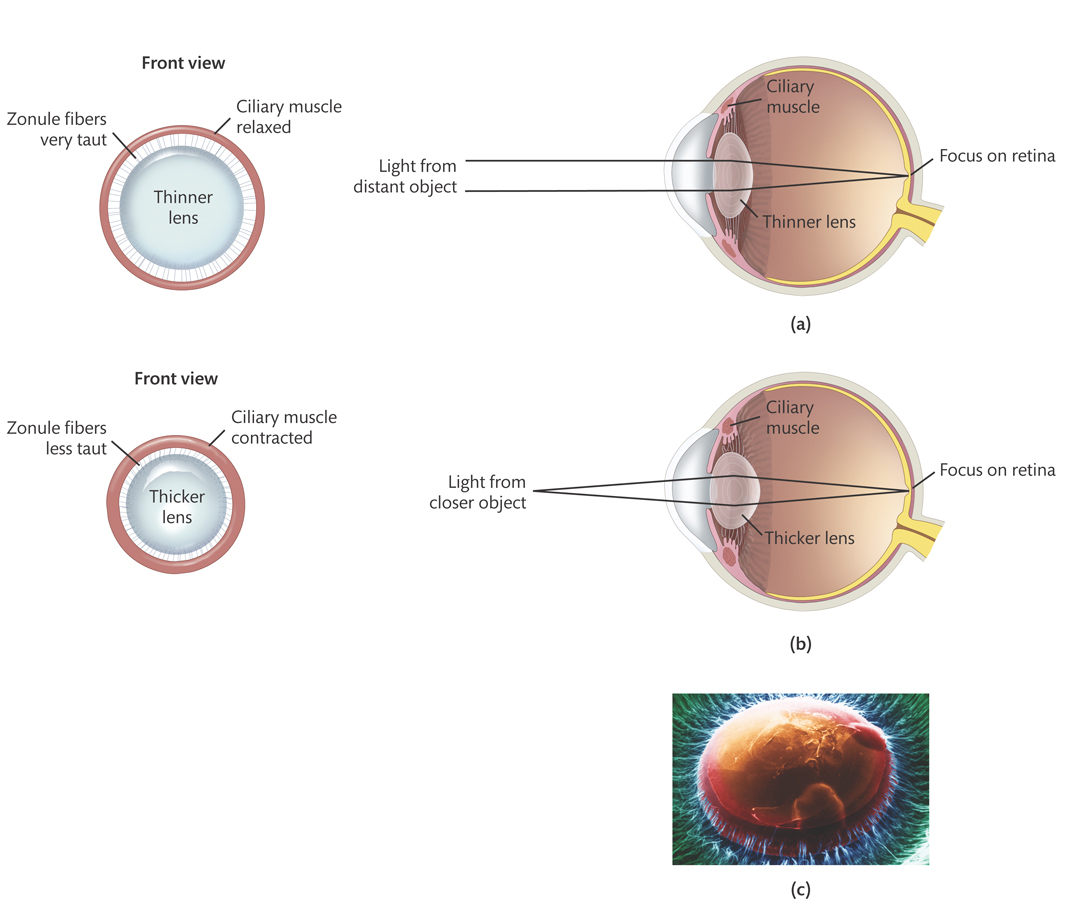Light enters the eye by first passing through the cornea; it then goes through the
pupil and into the lens, a transparent structure that refracts the light, to ensure that light focuses properly on the retina.
The power of any lens to refract light determines its focal length, the distance from the lens at which the image of an object is in focus
when the object is far away from the lens (i.e., at "optical infinity," where the light rays from the object are effectively parallel to one
another). A weak lens doesn't refract light much; it is relatively thin and flat and has a long focal length. A strong lens refracts light
sharply; it is relatively thick and rounded and has a short focal length. The greater the power of a lens, the shorter the focal length.
For any given convex lens, as the object moves closer to the lens, the image of the object (formed on the other side of the lens) moves
further away from the lens. In a camera, the lens has a fixed shape; in order to focus light onto the image plane, you have to move the lens
farther from the image plane as the object gets closer. The human eye has evolved to solve this focusing problem in a different way: instead of
moving the lens closer to or farther from the retina, the eye adjusts the shape of the lens to change its focal length.
The edges of the lens are attached to zonule fibers, which are also attached to the choroid. The tiny ciliary muscle is also attached to
the choroid. When the ciliary muscle relaxes, the choroid can pull on the zonule fibers, which become more taut and exert more pull on the lens.
This stretches the lens and causes it to take on a relatively thin, flat shape, making it a relatively weak lens with a relatively long focal
length, appropriate for focusing light from distant objects. When the ciliary muscle contracts, it opposes the pull by the choroid on the zonule
fibers, which become less taut and exert less pull on the lens. The lens isn't stretched as much, so it takes on a thicker, more rounded shape,
making it a stronger lens with a shorter focal length, appropriate for focusing light from nearer objects. This adjustment of the shape of the
lens to focus on objects at different distances from the eye is called accommodation.








